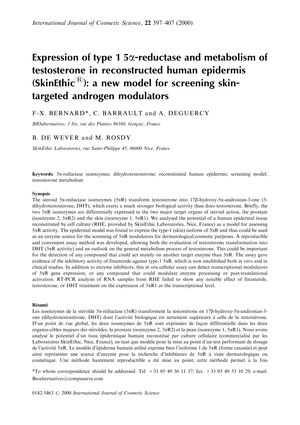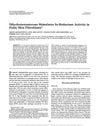Expression of Type 1 5α-Reductase and Metabolism of Testosterone in Reconstructed Human Epidermis: A New Model for Screening Skin-Targeted Androgen Modulators
December 2000
in “
International Journal of Cosmetic Science
”

TLDR The study created a new method to test drugs that affect hormone processing in skin.
The 2000 study developed a new assay method using a reconstructed human epidermis (RHE) model to screen for skin-targeted androgen modulators. The RHE was confirmed to express type 1 5α-reductase (5αR1), which is involved in converting testosterone into the more potent androgen dihydrotestosterone (DHT). The study showed that testosterone was metabolized in the RHE, with significant diffusion and metabolism occurring within 21 hours. Finasteride, a known 5α-reductase inhibitor, was tested and found to not significantly affect epidermal cell viability up to 10 µM concentration and to inhibit testosterone metabolism in a dose-dependent manner. The assay was convenient, reproducible, and effective in demonstrating the activity of potential modulators on 5αR enzyme activity. The RHE model was deemed suitable for evaluating the general metabolism of testosterone and for detecting compounds that might act on enzymes other than 5αR.

